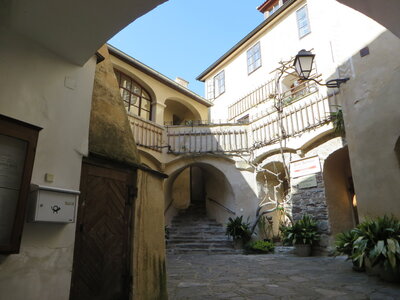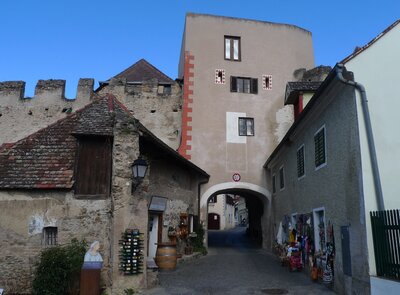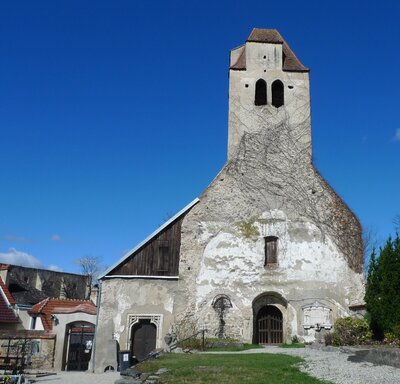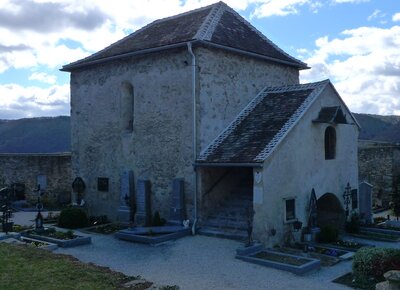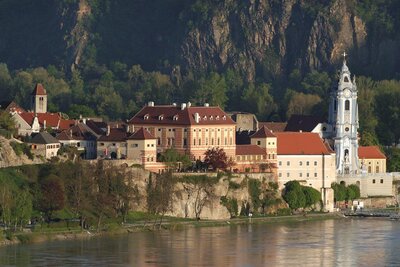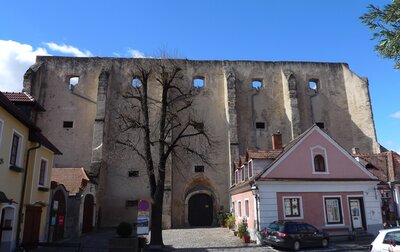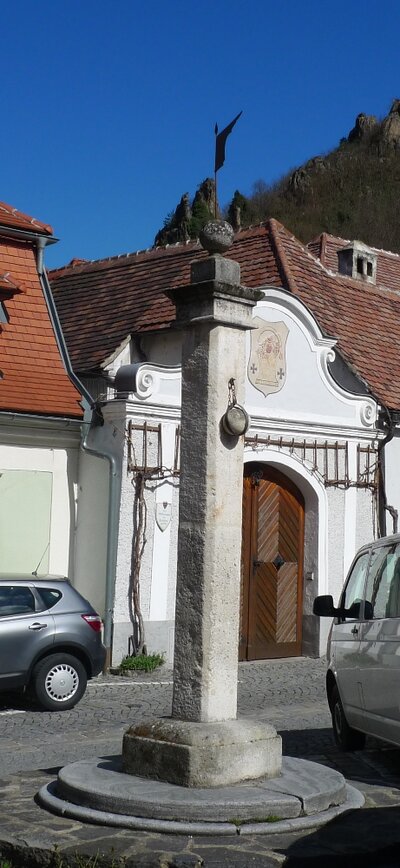Historical Buildings
Picturesque Buildings on the Western Edge of Town
The former prison and executioner’s house as well as the former western city gate now create a picturesque ensemble of buildings on the sloping road leading to the highway and the Danube.
The Kunigunde Church
The Kunigunde Church is the oldest church in Dürnstein. The former parish church was dedicated to Saint Kunigunde – the wife of Emperor Heinrich II – and was built around 1200, and then torn down in 1783. Only the tower and the vestry remained intact. The furnishings and materials were used for other churches in Lower Austria. The space that became available has since been used as a cemetery.
The Cemetery and Charner House
Shortly after the Krems Gate, a steep set of stairs lead up to the cemetery that is situated on the grounds of the former Kunigunde Church. Old tomb crosses, a charner house and the remaining tower of the Kunigunde Church create a moody picture.
The charner house is a Romanesque-Gothic building from the 14th century with a crypt in the basement. It stands in the center of the cemetery. The underground room contains the remains of those who were laid to rest in the cemetery. The remains of those who fell in the battle of Loiben in 1805 are also believed to be contained there. The chapel above is dedicated to the Archangel Michael and was converted into a memorial chapel for soldiers in 1925.
The New Castle
The castle was built in 1622 by Christoph Wilhelm von Zelking where the houses of ten winemakers formerly stood. It has a block-like structure built around a small courtyard, and the side facing the Danube is flanked by two towers. The architect was probably Cipriano Biasino from Como, who lived in Krems and who also built the Krems Parish Church.
The castle changed hands through marriage in 1634 going to the Count of Zinzendorf and Pottendorf, who sold it to the Countess of Starhemberg in 1663. The Countess only used the castle occasionally when visiting the vineyard estate or when on a hunt. In September 1683, while Emperor Leopold I was visiting the Dürnstein Castle, the message arrived that Vienna had been freed from the Turkish occupation.
In 1937, Ernst Rüdiger von Starhemberg sold the castle to the Thiery family. In the 1960s, the castle was modified into a hotel, and is still being operated as such to this day.
The Convent of Poor Clares
In 1289, the Convent of Poor Clares was founded by Leuthold I von Kuenring; in 1330, a two-nave church was built. The Poor Clares are the feminine branch of the Minorites or Franciscans, founded by Saint Clare, who emulated Saint Francis. As the nuns were not permitted to read Mass, take Confession or administer Communion, there were priests in the convent as well who carried out these responsibilities. The nuns lived in strict enclosure. Contact with priests or other men were limited to a minimum. The living quarters in the building were strictly separated. The Poor Clares died out in 1571.
At first, the convent was moved to the Augustinian Monastery, but later it was profaned. The church was then used as a farm building and for storage, and now the hotel “Richard Löwenherz” can be found where the convent complex used to stand.
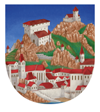 Dürnstein
Dürnstein
